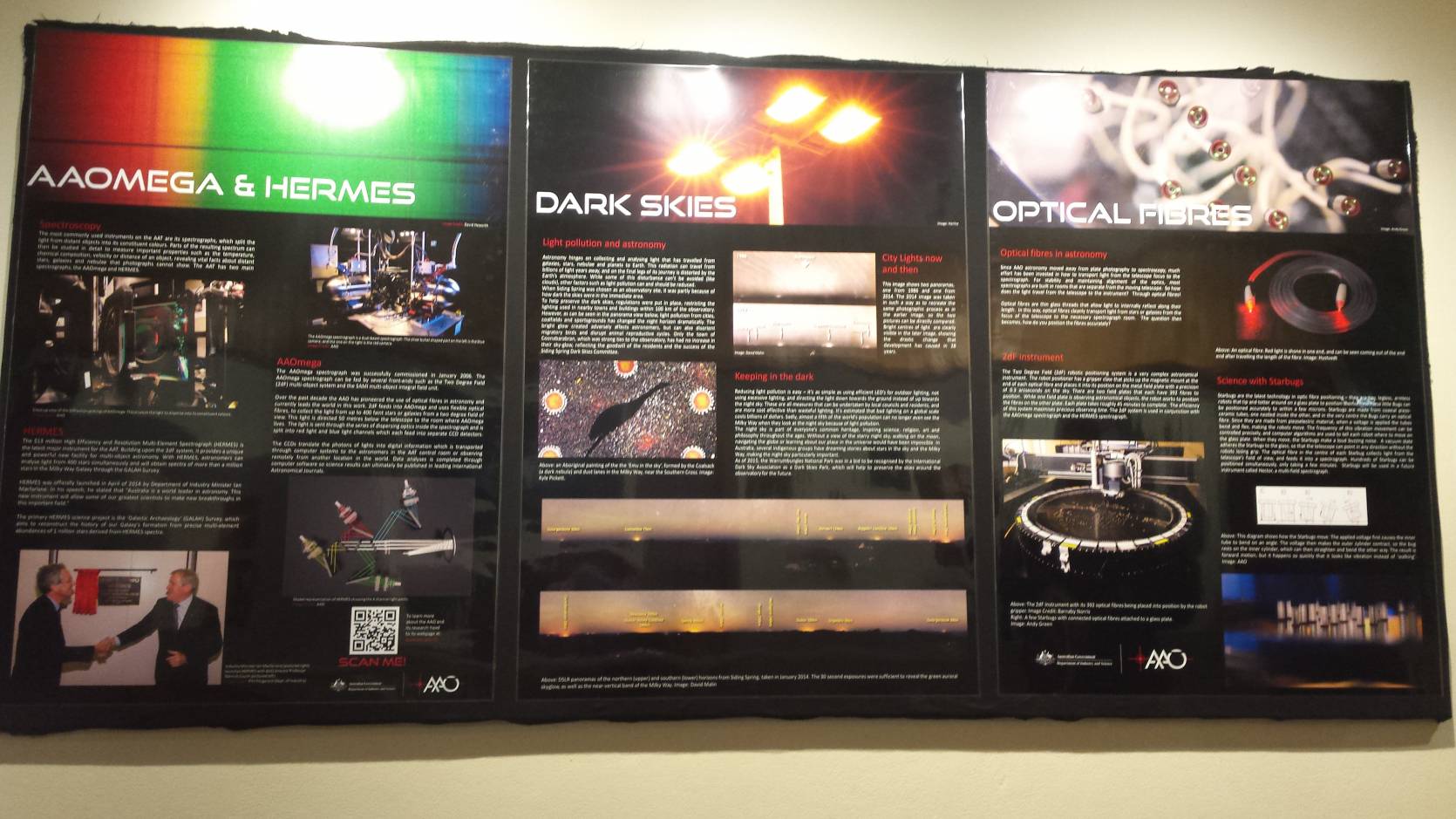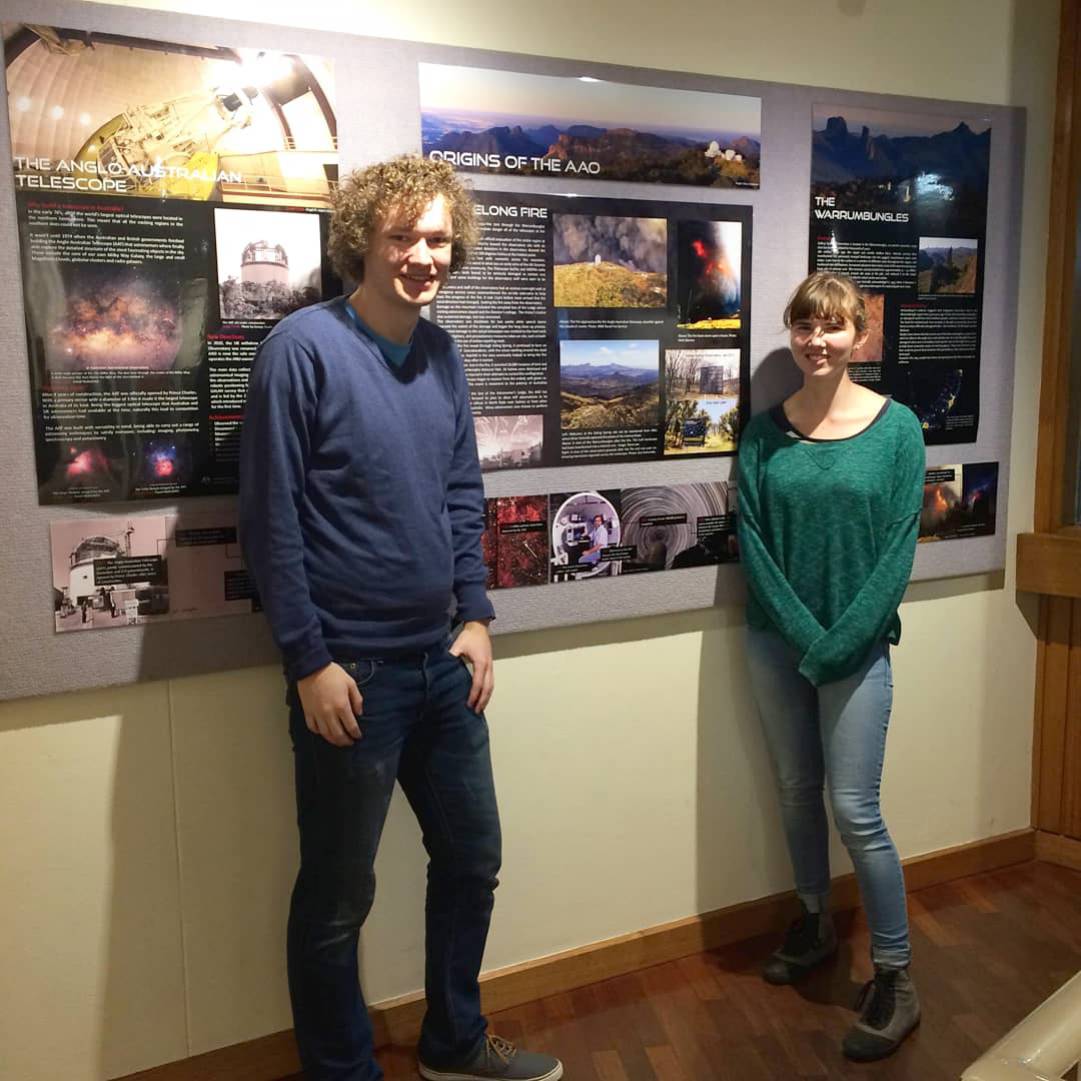Australian Astronomical Oservatory
Revamping an Outdated Exhibition
Outreach and the Australian Astronomical Observatory
Given that the Australian Astronomical Observatory (AAO) runs Australia’s largest optical telescope, the 3.9m Anglo-Australian Telescope (AAT), it is important to communicate the research the telescope conducts, and to promote astronomy understanding and awareness, rather than have the subject be of limited value or interest to the public at large. An example of the effectiveness of science communication is the impact of the film “The Dish”, which boosted visitor numbers to the Parkes Radio Telescope by approximately 180%. The film provided an effective hook, creating interest in the radio astronomy conducted in Australia.
This project had two parts, that both ultimately came back to successfully communicating the AAO’s work and achievements to the largest audience possible. By largest possible audience it is meant that communication is done carefully so as to be accessible to those without a degree in science, but in depth enough so as to still be illuminating. Part one consisted of creating an engaging poster exhibition for the Anglo-Australian Telescope, and part two consisted of redesigning and writing content for the AAO’s public and outreach website pages.
In both parts of this project, Caro and I worked with Dr. Amanda Bauer from the AAO.
Part 1: Redesigning the AAT Visitor Gallery
The first part of this project involved updating the poster exhibition in the visitor’s gallery inside the AAT complex, where members of the public can view the telescope and read about the research for which it is used. The posters had previously been installed in 1999 with no amendments since, leaving visitors unaware of almost half of the AAT’s history and functionality. As such, the updated posters covered three topical areas: science, technology and history. These sections were intended to show the process of the AAT’s development from construction site to worldclass telescope, the advances in technology being used on the telescope, and the actual results being obtained.
List of Posters
In total, we made 14 posters for the AAT which are listed below. You can see some of these posters in the gallery.
- History Poster Wall
- The Origins of the AAO Banner
- The Anglo-Australian Telescope
- Wambelong Fire
- The Warrumbungles
- The Timeline of the AAT
- Science Poster Wall
- Supernova 1987a
- Galactic Archaeology
- Exoplanets
- Plates to Spectroscopy
- Galaxy Surveys
- Dark Energy
- Technology Poster Wall
- AAOmega & Hermies
- Optical Fibres
- Dark Skies
Part 2: AAO Public and Outreach Website Redesign
The second part of the project delt with the reconstruction of the AAO public education and outreach web pages, with the aim of making them more informative and accessible to a wider audience. This largely consisted, aside from superficial design considerations, of creating content for the ‘We Get Asked That A Lot’ section and the newly developed ‘Glossary’ section.
Astronomy concepts were separated into two distinct pages based on their relevancy and complexity. Fundamental definitions and concepts required to have a basic understanding of any of the website content were placed into the glossary section. For example, anyone venturing into astronomy reading would need to be familiar with terms such as ‘apparent magnitude’, ‘metallicity’ and ‘SNR’. These terms (and many others) were given simple, short definitions that explained the terms without using further astronomy related words. The glossary section is thus meant as a supplement to the main public website, so that readers can engage with the larger ideas expressed in content without being confused by terminology specific to astronomy.
The remaining concepts, deemed to be of a higher conceptual level, were placed in the FAQ section. These concepts required a more detailed answer and often brought together a number of different ideas in astronomy: for example, an explanation of redshift requires an understanding of relative velocity, light propagation and gravitational effects.
Conclusions
The poster exhibition was successfully installed in the visitor gallery of the AAT, with initial positive feedback. The topics covered are thought to have provided a detailed overview of the scientific merit of the telescope, and hopefully garner interest for astronomy in general.
This project provided the opportunity to engage with all levels of research and development at the AAO, from technology prototyping and design through to the data analysis and results of studies. Although the project had many hurdles that had to be overcome (including developing an understanding of graphic design, efficient planning and time management, learning the basics of html and css), we learnt a lot of valuable skills and has provided a valuable insight to the high level of astronomy being conducted within Australia.



